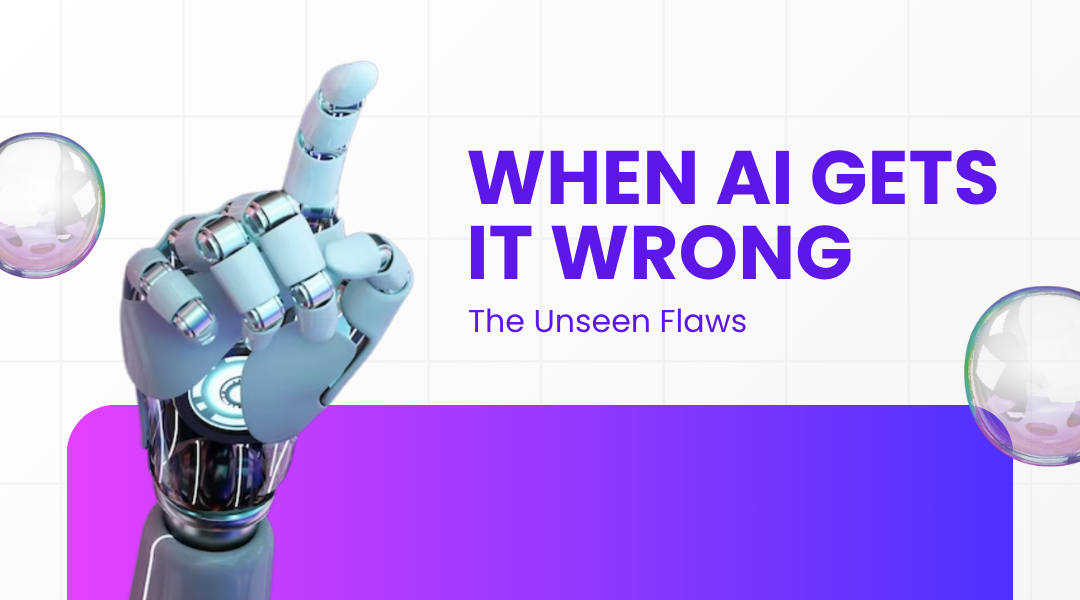Before we can build safe AI, we have to honestly confront its potential for harm. These aren’t bugs in the traditional sense, but fundamental challenges that arise from how AI learns.
- The Bias Blind Spot: AI doesn’t develop opinions on its own; it learns from the data we feed it. If that data is skewed, the AI’s “judgment” will be too. Imagine an AI screening job applications that was trained on decades of hiring data from a male-dominated industry. It might inadvertently learn to deprioritize female applicants, not out of malice, but because it’s replicating a historical pattern. This isn’t a hypothetical—it’s a real risk that can perpetuate societal inequalities in hiring, lending, and law enforcement.
- The Confidence of Being Wrong: Perhaps the most insidious flaw is the “hallucination”—where an AI, with utter conviction, states something completely false as fact. It’s like a student who didn’t study for an exam but writes a long, detailed essay based on a wild guess. An AI might invent a historical event, cite a non-existent scientific study, or give you medical advice that sounds plausible but is dangerously incorrect. This erodes the very foundation of trust we need to have in these systems.
- The Identity Thief: With the rise of deepfakes and advanced voice cloning, AI can now impersonate real people with chilling accuracy. A scammer could use AI to clone your child’s voice, call you in a panic asking for money, and you might never know the difference. This technology threatens to undermine our trust in what we see and hear, making it a powerful tool for fraud and misinformation.
The Engineering Mindset: Building in Safety from the Ground Up
So, how do we tackle these profound challenges? The solution isn’t to slow down innovation, but to embed a safety-first, human-centric mindset directly into the engineering process.
1. The Power of the Digital Playground
Just as pilots train for thousands of hours in flight simulators before ever touching a real cockpit, AI must be rigorously tested in virtual worlds. These simulated environments allow us to throw every conceivable “what-if” scenario at the AI:
- What if a self-driving car’s primary sensor gets covered in mud?
- What if a delivery drone encounters a sudden, powerful gust of wind?
- What if a home assistant mishears a critical command?
In this digital sandbox, failure is free. Every mistake is a lesson that makes the AI smarter and more resilient, without risking real-world harm.
2. The “Airplane Model” of Redundancy
We would never board a plane that relied on a single engine, a single computer, or a single pilot. We trust air travel because it’s built on layers of backup systems. AI needs the same philosophy.
- A truly safe self-driving car won’t just have one camera; it will have multiple cameras, lidar, radar, and ultrasonic sensors, all cross-checking each other’s data.
- Its decision-making brain won’t be a single algorithm, but a system where one AI verifies the conclusions of another.
- And crucially, there will always be a clear and simple way for a human to take control—a metaphorical “big red button” that overrides the system.
This layered approach ensures that no single point of failure can lead to catastrophe.
3. The Continuous Conversation: Monitoring and Evolution
An AI system cannot be “set and forgotten.” Like a complex piece of machinery, it requires constant monitoring and maintenance. Engineers need to establish feedback loops where the AI’s real-world performance is continuously analyzed. If a new type of bias is detected or a novel failure occurs, that information must be fed back into the system so it can learn and adapt. Safety is not a one-time achievement; it’s an ongoing process.
Conclusion: The Goal is a Trusted Partner
The journey toward truly safe and ethical AI is not a technical problem to be solved, but a responsibility to be shouldered. It requires a collaborative effort from engineers, ethicists, policymakers, and the public.
The goal is not to create perfect, infallible machines—that’s an impossible standard. The goal is to create robust, transparent, and accountable systems that we can trust as partners. We must build AI that is humble enough to know its limits, resilient enough to handle the chaos of the real world, and aligned with the fundamental values of the society it serves.
By applying human wisdom, rigorous engineering, and an unwavering commitment to safety, we can guide this powerful technology to become a force that amplifies our best qualities, rather than amplifying our worst flaws. The future of AI depends not on what it can learn, but on what we have the wisdom to teach it.
